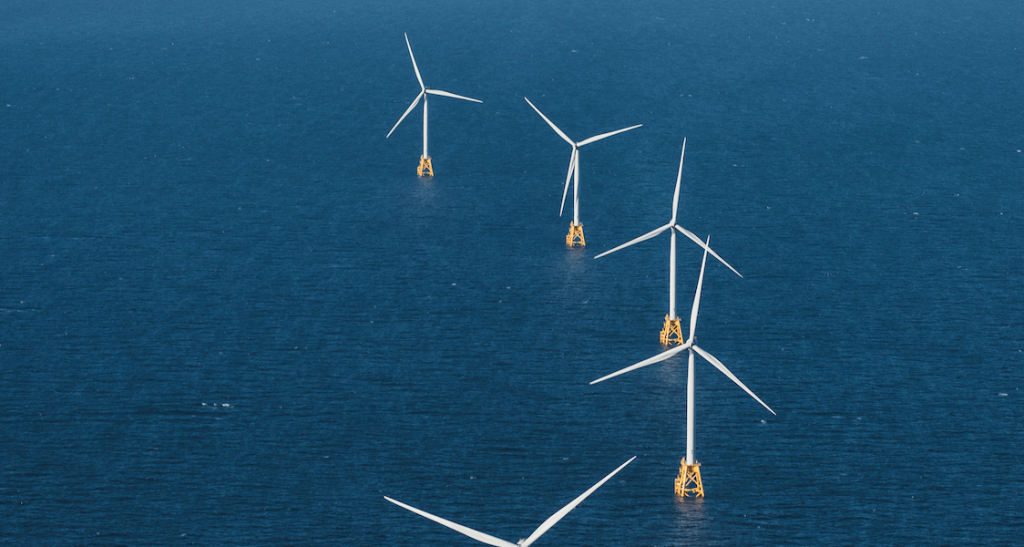COURT HOUSE – The week after Cape May County hosted an offshore wind information session in Ocean City and U.S. Rep. Jeff Van Drew (R-2nd) brought a field hearing on offshore wind industrialization to Wildwood, county Democrats countered with a virtual presentation of their own, clearly intended to present the offshore wind initiative in its most positive light.
The presentation March 20 drew about 75 individuals at its high point, according to the Zoom counter listing participant numbers. Plagued with some technical difficulties, the presentation took on the flavor of a group speaking to itself more than one seeking to educate the public at large.
Repeated comments were made to send a document or a study around to everyone with the kind of information that would tell the meeting audience what specific slides or specific documents would be available for public access at what specific website.
The event coincided with the release of a new United Nations Intergovernmental Panel on Climate Change report.
Summed up, the report warned, “Global greenhouse gas emissions have continued to increase, with unequal historical and ongoing contributions arising from unsustainable energy use, land use and land-use change, lifestyles and patterns of consumption and production across regions, between and within countries, and among individuals (high confidence).”
In short, the thrust of the report is that things are getting worse and adaptive action is urgently needed.
The county Democrats built their presentation around two speakers. One was Sunni Vargas, offshore wind campaign organizer for the New Jersey League of Conservation Voters. The other was Heidi Yew, policy director for the Pinelands Preservation Alliance.
The two shared a slide deck and passed the presentation responsibilities back and forth through the approximately one-hour event.
The presentation began with a discussion of federal, state, multistate and local roles in climate change adaption and clean energy development.
While discussing local community participation in adaptive strategies, Vargas cited recent efforts in Upper Township aimed at accommodating a new substation in Beesley’s Point but failed to acknowledge the ongoing conflict between Ocean City, Cape May County and Ocean Wind LLC concerning the transmission cable route from the wind farm to that new substation.
It was a glaring omission that appeared to underplay the local opposition that was in such evident display in the county organized meeting the week before.
Vargas then moved her focus to Ocean Wind I and II, along with the Atlantic Shores project, as the New Jersey efforts that are at various stages of implementation.
Frequently, Vargas described New Jersey’s geology as “both a blessing and a curse,” citing the fact that the state is “sinking” while sea levels are rising. This makes, she maintained, New Jersey among the most vulnerable states in the union with respect to climate change.
The boon of New Jersey geology to Vargas is the contour of its long coastline and natural wind production, which makes it an excellent location for capturing wind energy.
The presenters warned that wind farm opposition groups too often cite the efficiency of wind energy, leaving the impression that other forms of energy have higher efficiency levels. Not true, said both Vargas and Yew. They presented a slide showing much lower levels of efficiency for fossil fuels that are burned to gain access to energy. The burning, they said, loses much potential energy to heat. It was a technical point, run through quickly without providing the context to truly drive home the point.
The presentation then turned to citing environmental benefits of wind farm construction. This was a timely focal point given that most of the opposition to the wind farm development has cited concerns over environmental damage. Again, the subject was delt with but not in the kind of depth or with the context needed to offset the many environmental concerns that have been raised.
Participants heard of plans for artificial reefs at the base of turbines, of requirements that lease holders must return the lease areas to original conditions at decommissioning, and about the 94% of the turbines that will be recyclable.
Survey work in advance of wind farm construction was described in ways that tried to speak to the spike in sea mammal fatalities. Seabed floor mapping and soil sampling were presented to challenge claims that sound pollution from this work is part of what is causing the whale fatalities. Assurances were given that federal agencies have determined that no evidence exists to show a link between the fatalities and wind farm survey work.
The presenters argued that sea mammal deaths are part of a longer trend dating to 2016 and beyond, a product, they said, of warmer oceans moving whale food supplies into extremely busy ocean shipping lanes into and out of the ports on New York and New Jersey. More whales than ever before are being drawn into “harm’s way” and made more vulnerable to vessel strikes.
In counter to those who argue that visible wind farms will hurt the shore economy, the presentation made the statement that New Jersey’s vulnerability means that “we could lose the shore by 2050,” if appropriate actions are not taken. That dramatic a statement called for evidence that was not on display.
The presentation touched on the argument that wind energy development will be a boon to the state’s economy, creating “good jobs” and positioning the state to be a green economy leader.
When questioned about the impact on the fishing industry, with specific reference to comments made at the Van Drew hearing in Wildwood, the response was that financial assistance will be available to those who suffer economic dislocation from the wind farms.
Economic issues concerning potential property value impacts and loss of tourism dollars were met with a reference to a London School of Economics study that Vargas said, “I can send around for you to send out.” The response intensified the feeling of a group speaking to itself.
The presentation lacked the hard responses to predictable issues that had been raised just one week before in larger public forums.
Contact the author, Vince Conti, at vconti@cmcherald.com.








